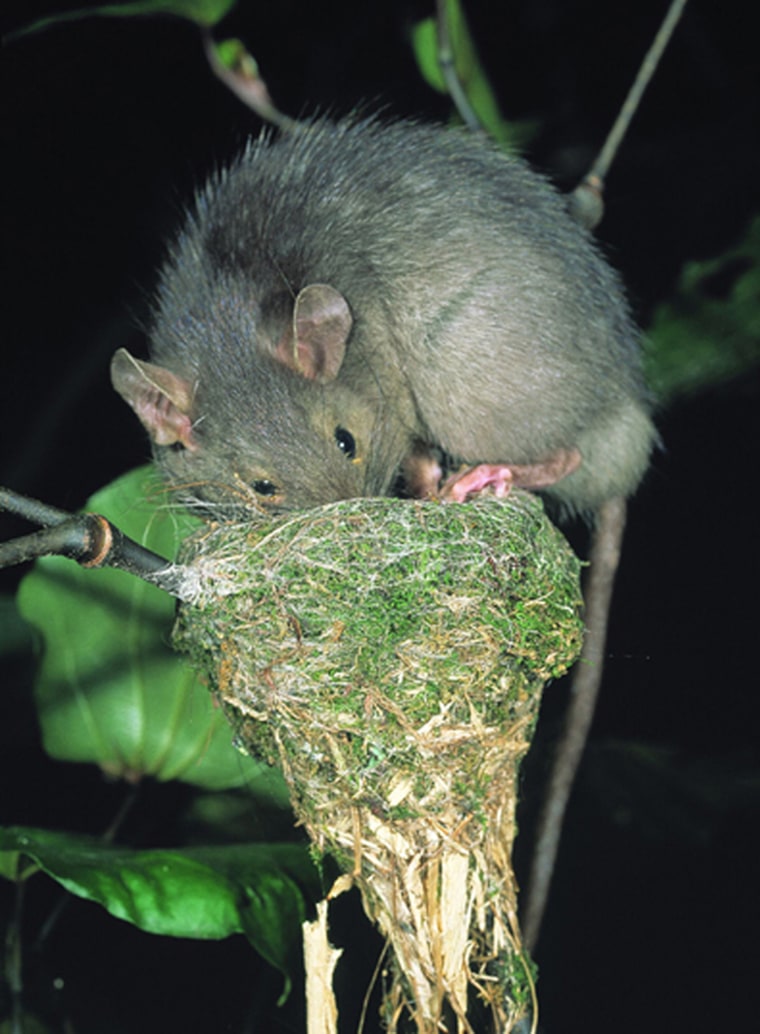It seemed like a good idea. Let a lone rat loose on a rodent-free island and then figure out how to kill it. That way, when other islands are invaded by rats, you'll know what to do.
Scientists figured they'd trap this foot-long varmint in no time.
Eighteen weeks later, they finally trapped it with some fresh penguin bait. On another island.
Rodents are a problem just about everywhere. In New Zealand, at least 11 islands have been invaded by Norway rats since 1980, in each case after rats from earlier invasions had been eradicated. The invaders disrupt local ecosystems.
In the new study, announced today, a Norway rat was originally lured into a trap with chocolate. Its DNA was recorded, and the rat was outfitted with a radio collar and set free on the tiny island of Motuhoropapa off the coast of New Zealand.
With no rats to compete with, the test subject traversed the entire island for about four weeks before settling on a home range, data from the radio collar showed.
For the next four weeks, conventional rat-trapping techniques were employed — snap traps, live traps and waxed devices — without success.
After 10 weeks, the radio signal was lost.
Island hopping
Then the researchers found rat feces on the island of Otata, 1,300 feet (400 meters) away across the open ocean. The DNA was a match, confirming a suspicion scientists had, that rats were good swimmers.
The elusive creature had made the longest confirmed open-water crossing of any rodent in history.
Different methods were used on Otata: buried traps, peanut butter, poison and even trained dogs. Not until more than four months after its release was the rat finally killed, in a trap baited with fresh penguin.
The scientists, led by James Russell at the University of Auckland, sagely conclude that conventional methods didn't work well. They also have an idea why: Being alone, the rat didn't behave as it would have in a rat-infested city; and with no competition for food, the bait was less attractive than it otherwise would have been.
The results are detailed in the Oct. 20 issue of the journal Nature.
"Our results may help in the design of conservation strategies to keep islands free of invasive rodents," the researchers write.
